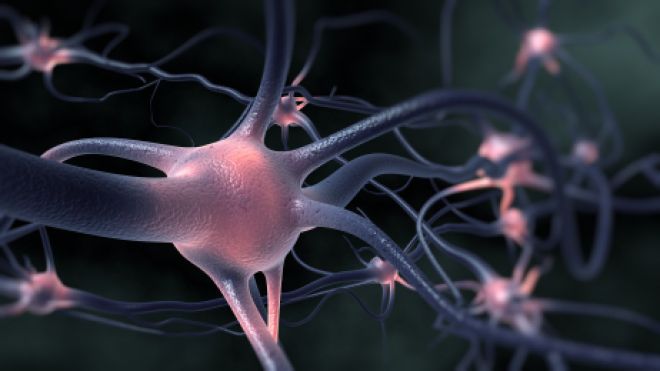
When Wes Schlauch, of Breinigsville, PA, was 16 years old, he suffered a stroke that paralyzed the entire right side of his body. Miraculously, three years later, Wes is not only walking and talking – he’s even sending text messages, attending college and going on fishing trips with friends. Wes’ positive attitude, devotion to rehabilitation and strong support system has had much to do with his success. But Wes has also benefitted tremendously from a cutting-edge technology that is revolutionizing therapies for patients suffering from brain injuries and neurodegenerative diseases: a new treatment known as functional electrical stimulation (FES). FES has been pioneered by companies like Bioness Inc., based in Valencia, CA., which created the devices that Wes uses. The devices – which Wes wears on both his right hand and leg – use electricity to stimulate the damaged portions of his brain and the neural connections between the brain and muscles. “The idea is that by using the electrical stimulation to make the muscle fire, his brain will retrain and relearn, and his muscles will fire more automatically without it in the long term,” Jolene Hammer, a physical therapist at Lehigh Valley Hospital in Bethlehem, PA., who works with Wes, told FoxNews.com. FOUR IN 100,000 Strokes are incredibly rare among children and teenagers like Wes. “From after the newborn period through age 18, the incidence (of stroke) that we estimate is about four in 100,000 children per year,” Dr. Rebecca Ichord, director of the pediatric stroke program at The Children’s Hospital of Philadelphia, who treated Wes, told FoxNews.com. According to Ichord, Wes’ stroke was likely triggered after he experienced whiplash while playing hockey. Doctors believe that one of the arteries in Wes’ neck twisted and dissected, causing the walls of the artery to separate. This caused a blockage in Wes’ blood flow that led to the formation of a clot – resulting in a stroke. Wes’ stroke was particularly devastating because it occurred in his baseline artery, which facilitates blood flow to critical parts of the brain. “(His) was one of the most severe types of strokes; when you block the baseline artery, you block critical parts of brain systems that control all elements of function,” Ichord said. “The mortality is relatively higher than in other types of stroke and long term handicap can be devastating.” Luckily, Wes was able to receive a clot-dissolving therapy within eight hours of his stroke, which restored blood flow to the injured part of his brain. However, Wes still had a long journey ahead of him. The right side of Wes’ body was paralyzed – a condition called hemiparesis. “I remember lying in the hospital bed and looking up at the ceiling, because that’s all I could do,” Wes told FoxNews.com. “My respiratory therapist told me to visualize myself getting better so I just visualized myself getting out of that situation.” Eventually, Wes stabilized and was moved to a rehabilitation facility where he had to relearn basic daily tasks, like dressing himself and eating – all the while confined to a wheelchair. THE RECOVERY PROCESS Fortunately, Wes didn’t stay in his wheelchair for long.  He soon progressed to a walker and then to a cane. As Wes regained his strength, he was able to begin FES treatments, with the help of his rehabilitation team.   To regain the use of his right hand, Wes eventually began using the Bioness NESS H200® Hand Rehabilitation System – an external device that Wes wears on his hand and arm. “That’s helped me be able to be more dexterous with my movements and has overall helped my hand big time,” Wes said. “It used to be that my hand was in a fist, and I wasn’t able to use it at all. I got the H200 device and I was able to use my hand nicely.” “I’ve even been known to text with my right hand,” Wes added. Later, Wes progressed to the NESS L300™ Foot Drop System, which allowed his foot to move more freely. “As he’s been using it, I see that he’s now able to start to actively move those muscles without it that he wasn’t before…Now, he can lift his foot and be aware of it and pull it up on his own,” Hammer said. “He has gotten to be able to lift his toe up and to be able to activate his hamstring.  Just last week, Wes took home a new device – the L300 Plus – which he will wear on his thigh to stimulate his hamstring. Wes will use this in conjunction with the L300 in order to gain further control over his leg, bolstering his ability to walk and even maneuver stairs. Though Wes gets fatigued easily (especially when using the devices), he is building up his tolerance and strength, and he eventually hopes to be able to wear both the L300 and L300 Plus for full days. “It’s helped my walking a ton and being able to walk around the community is a lot better for me as opposed to just being in a wheelchair like I was before. Now I’m on a cane. It’s helped me a lot,” Wes said. Wes’ doctors hope that technology like the Bioness devices will eventually help repair the damaged parts of Wes’ brain to some extent. “I think it’s a cutting edge way to start to work on retraining the muscle and hopefully to play into neuroplasticity, to activate the brain to make new connections and to activate these muscles,” Hammer said. ‘AN EXTRAORDINARY YOUNG MAN’ Wes continues to make extraordinary advances in his treatment and personal life – even making the dean’s list at college. “His speech is also a little affected, but he can still communicate,” Ichord said. “And his cognitive learning abilities, personality and sense of humor (were) all preserved; the thinking part is doing well and was never directly affected.” Wes credits his experience as a hockey player for giving him his strong work ethic.   “I work hard, I always did – back from when I was 16 on. I worked as hard as I could and…I really want to get back on the ice. That’s my main motivating factor,” Wes said. Wes continues to impress his physical therapists and doctors every day, and Hammer said she has high hopes for Wes’ future progress.   “I’ve been a therapist for a long time and he’s an extraordinary young man – one of the most motivated people I’ve met. If every patient worked as hard as him, I’d be out of a job,” Hammer said.source : http://www.foxnews.com/health/2013/05/20/electric-stimulation-treatments-help-young-stroke-victim/



